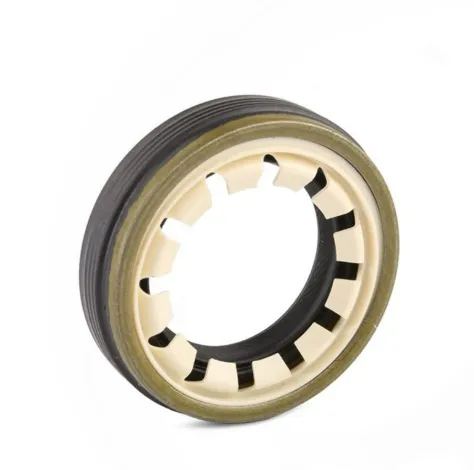Understanding Polaris Front Differentials: Key Components for Off-Road Performance
The front differential is a vital component in any 4x4 vehicle, especially in off-road utility and recreational machines like those made by Polaris. Whether you're tackling rugged terrain in a Polaris Ranger, exploring trails with a Polaris RZR, or working with a Polaris General, the front differential ensures smooth and controlled power distribution to the front wheels. In this article, we’ll dive into what a differential is, why Polaris front differentials matter, and how they differ between models like the Ranger, RZR, and General.

What Is a Front Differential and Why Does It Matter?
A differential is a gear system that allows wheels to rotate at different speeds—critical when turning corners. In 4x4 vehicles, a front differential works alongside the rear differential to distribute power to the front wheels, improving traction and handling. Without a differential, turning would be jerky, and tires would wear unevenly or lose grip.
Polaris integrates front differentials into its off-road vehicles to optimize performance. These systems often include limited-slip or on-demand AWD mechanisms, allowing for automatic engagement when extra traction is needed. This helps riders maintain control during mud, snow, or rock-climbing conditions.
Polaris Ranger Front Differential: Built for Work
The Polaris Ranger front differential is designed for utility. Rangers are workhorses used in farming, construction, and hunting—often in harsh environments. Polaris equips the Ranger with an On-Demand True AWD system, which detects wheel slip and instantly sends power to the front wheels.
Key features of the Ranger’s front differential:
Automatic Engagement: No need to manually switch to 4WD; it kicks in when needed.
Durability: Built to withstand hauling, towing, and rough terrain.
Quiet Operation: Engineered for low noise during operation.
Over time, the front differential in a Ranger may need maintenance—particularly the fluid, seals, and gear components. Owners often upgrade the differential with HD (heavy-duty) sprague carriers or armature plates for even greater durability.
Polaris RZR Front Differential: Engineered for Adventure
The Polaris RZR front differential is performance-focused, built for speed and agility on trails, dunes, and technical terrain. RZRs are sporty side-by-sides, and their differentials are optimized for quick response and precise power delivery.
What makes the RZR’s front differential unique:
High-Performance Engagement: More sensitive to terrain changes for better throttle response.
Visco-Lok or True On-Demand AWD systems: Depending on the model, these offer different engagement styles.
Upgrades Available: Many RZR owners replace stock components with aftermarket HD sprague kits to prevent failure under aggressive riding.
Some RZR models like the Turbo S or XP 1000 come with beefed-up front differentials compared to base models, making them better suited for high-speed impact zones and jumps.
Polaris General Front Differential: A Versatile Balance
The Polaris General front differential blends the work-ready build of the Ranger with the trail capability of the RZR. As a hybrid utility-recreation vehicle, the General needs a front differential that balances durability with performance.
Characteristics of the General’s front differential:
True On-Demand AWD: Same smart engagement system as in the Ranger and RZR.
Medium-Duty Build: Tougher than the RZR base models, but not quite as heavy-duty as the Ranger HD systems.
Smooth Handling: Especially important for trail riders who also need cargo capacity and comfort.
General owners often customize their front differential depending on their primary use—trail versus utility—opting for clutch upgrades, differential fluid swaps, or aftermarket gear sets to suit their needs.
Polaris Front Differential Maintenance and Common Upgrades
Regardless of which Polaris model you own, the Polaris front differential should be maintained regularly for peak performance. Here are key maintenance tips and upgrade ideas:
Regular Maintenance:
Fluid Change: Use Polaris-approved demand drive fluid every 100 hours or as specified in your owner’s manual.
Seal Inspection: Check for leaks or debris that can damage internal gears.
Noise Check: Clicking or grinding noises can indicate a damaged sprague carrier or worn bearings.
Popular Upgrades:
HD Sprague Carriers: More resistant to cracking under high torque.
Billet Armature Plates: Provide smoother and more durable gear engagement.
Upgraded Rollers and H-Clips: Improve engagement response and reduce wear.
These upgrades are particularly common among RZR and General users who ride aggressively or compete, but even work-focused Ranger owners benefit from enhanced reliability.
Choosing the Right Polaris Front Differential Setup
In summary, the differential front system in Polaris vehicles is tailored to each model’s purpose:
The Polaris Ranger front differential is made for tough jobs and reliability.
The Polaris RZR front differential is tuned for speed, responsiveness, and extreme terrain.
The Polaris General front differential offers a balanced design for both work and play.
Understanding how each Polaris front differential works helps you choose the right machine—or upgrade path—for your specific use. Whether you’re hauling equipment, climbing dunes, or cruising wooded trails, the front differential is key to keeping your ride smooth, controlled, and capable.
-
Simplifying Oil Changes: A Comprehensive Guide to Oil Drain Plugs and Their Variants
Kabar Aug.04,2025
-
Mastering Oil Drain Maintenance: Solutions for Stripped, Worn, and Upgraded Oil Plugs
Kabar Aug.04,2025
-
Fixing Oil Pan Plug Issues: Leaks, Stripped Nuts, and the Right Replacement Solutions
Kabar Aug.04,2025
-
Everything You Need to Know About Oil Drain Plugs: Sizes, Fixes, and Upgrades
Kabar Aug.04,2025
-
Choosing the Right Oil Drain Plug: A Guide to Sizes, Materials, and Drain Innovations
Kabar Aug.04,2025
-
A Complete Guide to Automotive Drain Plugs: Types, Problems, and Innovative Solutions
Kabar Aug.04,2025
-
The Ultimate Guide to Car Repair Kits: Tools and Essentials Every Driver Should Own
Kabar Aug.01,2025
Kategori produk















